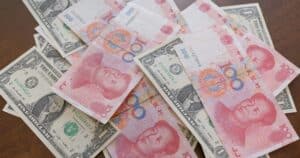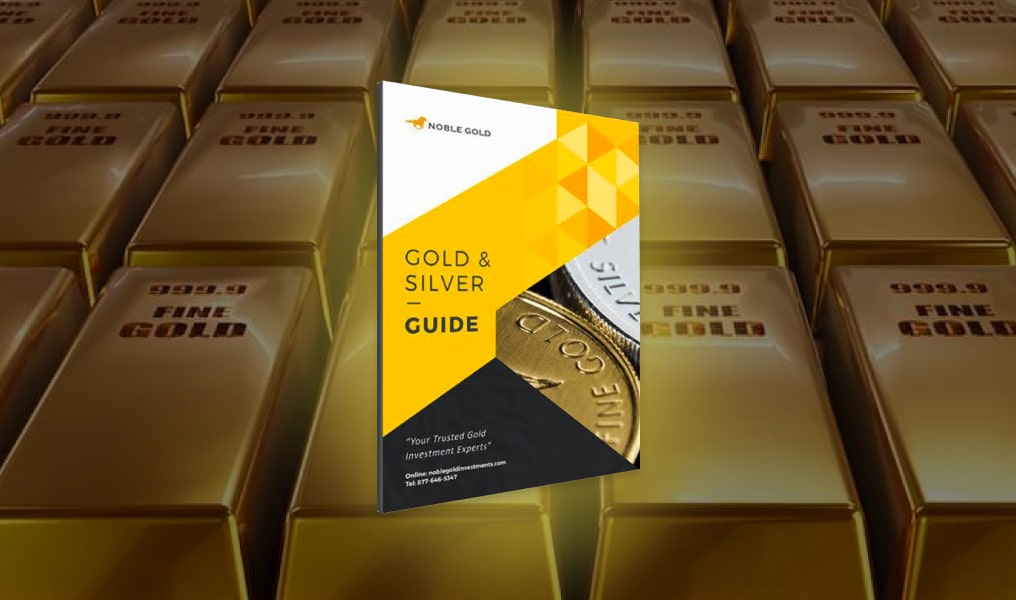Stagflation is an economic phenomenon that has baffled economists and policymakers for decades. It’s a unique situation where an economy simultaneously experiences slow growth, high unemployment, and rising inflation. Despite this seemingly paradoxical condition that contradicts traditional economic theories, which suggest that slow economic growth should naturally curb inflation, history has shown us that stagflation is possible and can have devastating effects on an economy.
If the threat of rising inflation and high unemployment rates is concerning, understanding the complexities of stagflation and how we can learn from past experiences is necessary to prevent or manage such economic conditions.
Causes Of The 1970s Stagflation
The 1970s experienced five quarters of negative GDP growth, double-digit inflation, and a staggering 9% unemployment rate. During this period, the economic landscape was characterized by rapidly rising prices and stagnating wages, severely affecting household purchasing power.
Monetary Factors
The loose monetary policy pursued during this period had unintended economic consequences. Although this policy was meant to stimulate economic growth and reduce unemployment, it resulted in an overheated economy and unsustainable borrowing. Combined with high inflation rates, this led to a situation in which both prices and interest rates rose rapidly.
Abandoning the gold standard and introducing fiat currency also allowed for greater flexibility in monetary policy. However, this also increased uncertainty and undermined confidence in the currency’s stability. As a result, both investors and consumers stopped holding cash, which led to a decline in the demand for money and further increased inflationary pressures.
Supply-Side Factors
Oil price shocks were particularly damaging because they drove up energy costs for businesses and burdened households. When gasoline and heating oil prices spiked, people had less disposable income for other goods and services. This decline in consumer spending further dampened economic activity and worsened the stagflation crisis.
At the same time, the rigidity of labor markets made it difficult for businesses to adapt to changing economic conditions. High union density and strict labor laws prevented companies from readily laying off workers or adjusting wages to lower demand. This lack of flexibility hindered companies’ adjustment to the new economic reality and prolonged the stagflation crisis.
As workers demanded higher wages to keep up with rising prices, businesses passed these increased labor costs on to consumers through higher product prices. This feedback loop between wages and prices contributed to persistently high inflation rates and made it even more difficult to escape the stagflation trap.
Lessons Learned From The 1970 Stagflation Crisis
The stagflation crisis of the 1970s taught policymakers valuable lessons about managing inflation and fostering economic growth.
The Complexity Of Economic Management
Central banks and policymakers recognized the importance of anchoring inflation expectations to ensure long-term economic stability. They realized that individuals and businesses that expect stable prices make better financial decisions and are less likely to engage in speculative behavior.
As a result, central banks began to take more proactive measures to manage inflation. They began to communicate their monetary policy decisions transparently and communicate their intention to keep inflation within a target range. This way, they tried to influence public perceptions and steer the behavior of market participants.
Policymakers also recognized that managing inflation expectations required focusing on monetary policy, fiscal policy, and structural reforms. They realized that sound fiscal policies, such as controlling government spending and reducing budget deficits, were necessary for maintaining price stability.
The Role of Monetary Policy
The Federal Reserve, under the leadership of Paul Volcker, raised the federal funds rate above 21% to curb inflation. This bold move demonstrated the power of central banks in controlling inflation and stabilizing the economy.
It underscored the need for central banks to act independently of political pressures and to make tough decisions when necessary, even if they seem unpopular in the short term. Banks also realized they needed to maintain credibility and act promptly to limit long-term deviations from targeted inflation rates and ensure economic stability.
Paul Volcker’s decisive action proved to be a turning point in the fight against stagflation. By raising the federal funds rate to unprecedented levels, he sent a clear message to the markets and the public that the Federal Reserve was determined to fight inflation head-on.
The Impact of External Shocks
The oil embargo and the collapse of managed exchange rates emphasized the vulnerability of economies to sudden changes in world markets and the importance of guarding against such shocks. In response, countries and international organizations have taken steps to improve the resilience of economies, including implementing financial reforms, strengthening regulatory frameworks, and promoting sustainable economic practices.
To build resilience, countries have diversified their economy, reduced reliance on a single sector or market, and promoted innovation and technological advancement. It also has included investing in education and social safety nets to protect vulnerable populations during economic instability.
The Need for Economic Diversification
As a result of the stagflation crisis, urbanist Jane Jacobs argued that countries must develop “import-substituting cities” that balance import and production to avoid stagflation. This idea holds that a diversified economy can better withstand economic shocks and maintain stability. By creating import-substituting cities, countries can reduce their dependence on external sources for essential goods and services, thus hedging against fluctuations in world markets.
Jacobs emphasized that these cities must be self-sufficient in terms of production so that local industries can thrive and meet domestic demand. This approach reduces the vulnerability of a country’s economy to disruptions in international trade and promotes the growth of new businesses and employment opportunities within the country.
In practice, implementing cities that replace imports requires strategic planning and investment in infrastructure, education, and research and development. Governments must identify industries with growth potential and provide them with the support they need to flourish. In addition, fostering collaboration between local businesses, universities, and research institutions can drive innovation and increase productivity.
Comparing The Current Economic Climate
The current economic climate in the United States bears some similarities to the 1970s stagflation, albeit with important differences. Understanding history can help policymakers develop effective strategies to combat stagflation in today’s context.
| 1970s Stagflation | Current Economic Climate |
| High inflation, uneven economic growth, and increased unemployment rates. | Inflation rates are high, but economic growth has been more consistent, and unemployment rates have been largely controlled. |
| Stagflation primarily resulted from unnatural government controls, as indicated. | The current inflationary pressure is largely due to global supply chain disruptions and pandemic-related economic factors rather than direct government controls. |
| The Great Inflation of the 1970s was a defining macroeconomic period lasting several years. | While the current inflationary trends are significant, it’s unclear if they’ll persist for an extended period, similar to the 1970s stagflation. |
| An external factor, the oil crisis, had a significant impact on the occurrence of stagflation. | External factors, such as the ongoing effects of the COVID-19 pandemic and disruptions in global trade, have played a substantial role in the current economic climate. |
| The intervention of the Fed was important in combating inflation and stabilizing the employment situation. | The role of the Federal Reserve is still important, with Jerome Powell expressing concern over high inflation in 2023. |
| Investment opportunities during stagflation were different due to the unique economic conditions of the time. | The current economic climate presents unique investment opportunities and challenges with various underlying factors. |
How You Can Prepare For Stagflation
Successfully combating stagflation requires a proactive and adaptive approach. However, by implementing certain measures, you can better position yourself to weather the challenges of this unique economic scenario.
Diversifying Your Portfolios With Precious Metals
Gold and silver are often considered safe haven assets for investors, as the value of these metals tends to increase during economic uncertainty. Gold, in particular, has historically been considered a hedge against inflation. When central banks increase the money supply to combat stagnation and rising prices, the purchasing power of fiat currencies can decline, causing investors to seek refuge in these tangible assets.
If you’re looking for a tax-advantaged option, a precious metals IRA allows individuals to hold physical bullion directly in their retirement account. Contributions to a precious metals IRA are usually tax-deductible, meaning they can reduce an individual’s taxable income for the year.
Additionally, gains made after the sale aren’t taxed immediately. Instead, taxes on the gains are deferred until the individual begins withdrawing funds from their IRA in retirement. This tax-deferred status can offer individuals potential long-term savings and flexibility in managing their retirement assets.
Real Estate Investments
Real estate value often remains stable or increases with high inflation, making it a valuable addition to your portfolio. These investments can generate consistent rental income that can offset the effects of inflation as a steady cash flow. Demand for housing typically remains strong regardless of the state of the economy, and this stability can provide investors with a sense of security during stagflation.
Additionally, real estate investments offer potential tax advantages. For example, rental income is often tax-deferred, allowing investors to keep a larger portion of their returns. Owners can deduct taxes, mortgage interest, and maintenance costs.
Fixed Income Investments
Treasury Inflation-protected Securities (TIPS) or other fixed-income investments protect against inflation. These securities adjust their value based on changes in the Consumer Price Index (CPI), ensuring that your investment keeps pace with rising prices and maintains its purchasing power. TIPS is particularly attractive to investors concerned about the eroding impact of inflation on their savings and who want a reliable way to preserve the value of their investments over time.
Unlike traditional fixed-income investments, such as regular Treasury bills, TIPS offers a built-in hedge against inflation. This is achieved by periodically adjusting the principal value of the investment, which in turn affects interest payments.
When inflation increases, the principal value of TIPS increases, resulting in higher future interest payments. Conversely, when inflation falls, the net present value falls, resulting in lower interest payments.
Purchase High-yield Bonds
Traditional bonds can suffer during high inflation because their fixed interest payments are worth less. High-yield bonds, however, can be more resilient because of their higher yields, which can provide a buffer against inflationary pressures. Some high-yield bonds are equipped to adjust their interest rates for inflation, providing additional protection for investors.
It should be noted that high-yield bonds can be more volatile than traditional investment-grade bonds. Their prices can fluctuate more in response to market conditions and investor sentiment changes. Therefore, investors should have a long-term investment horizon and be prepared for potential fluctuations in the value of their high-yield bonds.
Invest In Precious Metals Today
If you want to safeguard your savings and hedge against inflationary pressures, precious metals could be the perfect vehicle. Whether you invest through a self-directed precious metals IRA or purchase physical bullion, Noble Gold Investments offers several ways to invest in gold and precious metals.
Don’t let inflation eat away at your hard-earned savings, and call Noble Gold Investments today or click here to open your account. Our representatives are standing by to answer any questions you may have.







